20 ways to retain employees in your startup business in 2022 & beyond (with proof)
Introduction
The biggest question after getting to product-market fit is, how do you retain talent in the business?
Attracting good people to your team is really hard but retaining them is harder. It’s more painful to see your best employee leave.
Once an employee joins your startup and gathers a set of skills and valuable experiences, they build up better bargaining power for themselves. People are your essential assets and only by retaining them you can build a better business.
For any startup, it is essential to optimize your cost of employee turnover. The cost of employee turnover is the cost associated with hiring, onboarding, training, terminating, etc. If your employee leaves, you have to spend again on the next person who comes as a replacement. Also, you need to consider that when someone new comes, they need at least 3 months time to get used to the job. On top of that, remember that the person who is leaving will not be very productive in the last month or two. If you add all these costs, replacing a candidate can cost you anywhere between 3-5 months’ salary. So, if you’re a new business, you can’t afford to have high attrition.
So how do you hire and retain talent in your startup business?
In this post, we have gathered voices from people on Linkedin on what they think are possible solutions to retaining talent in the business.
We will discuss 20 strategies to retain staff in the workplace.
Why it’s necessary to retain employees?
You can’t run a business without people. You need people to make your products, people to sell your products. And, in between those two key functions, you need more people to manage the business.
In any organization, employees are the backbone and the most important resource. They are the ones who contribute to the growth and success of the company. It is essential to retain employees in order to maintain a strong workforce.
When employees leave, it costs the company money in terms of training new hires and lost productivity. In addition, high turnover rates can damage morale and create an unstable work environment.
Therefore, it is important for companies to focus on retaining their employees. This can be done by providing competitive salaries and benefits, ensuring a positive work-life balance, and offering opportunities for career development. By investing in their employees, companies can create a stable workforce that will contribute to long-term success.
Technology & money have become commodities. People are the only competitive advantage for startup founders & CEOs to build a sustainable & high-growth business.
Retention of employees is more difficult for a startup
Startups are vulnerable. Most startups fail. Most startups are bootstrapped and can’t raise venture capital.
Startups typically have a more difficult time retaining employees than established businesses. There are a number of reasons for this.
First, startups often have less money to offer in terms of salaries and benefits.
Second, they tend to be more chaotic and less structured, which can be stressful for employees.
Third, they are often located in areas with a high cost of living, which makes it harder for employees to live there.
Finally, startups are often acquired by larger companies, which can disrupt the workplace and lead to layoffs. All of these factors make it more difficult for startups to retain employees. As a result, they need to focus on creating a strong culture and providing employees with meaningful work. Otherwise, they will continue to turnover at a high rate.
Strategies to retain employees in a startup business
Let’s talk about 20 ways startup founders & business owners can retain staff in the organization.
1. It starts with recruiting
Recruiting the right candidates is essential for any organization that wants to reduce its staff turnover. By taking the time to identify and hire individuals who are a good cultural fit for the organization, and who have the skills and experience needed to be successful in their role, organizations can significantly reduce the likelihood of those employees leaving. Identify candidates who will stay the course.
A candidate gets to know about the company even before joining, through the recruitment process. Does HR communicate well with the candidate and keep them informed. For example, most people feel that doing 2 rounds of interviews is sufficient to select the right candidate.
If you’re confused about whether to hire a particular person, take our short quiz to find out if a candidate is suitable for your business.

2. Better work-life balance
With the recent pandemic, people’s priorities have changed. Mental health and close relationships have become more important than the monthly paycheck. People want a better work-life integration in their jobs. As an employer, you need to think how you can retain employees by giving them better work-life balance.
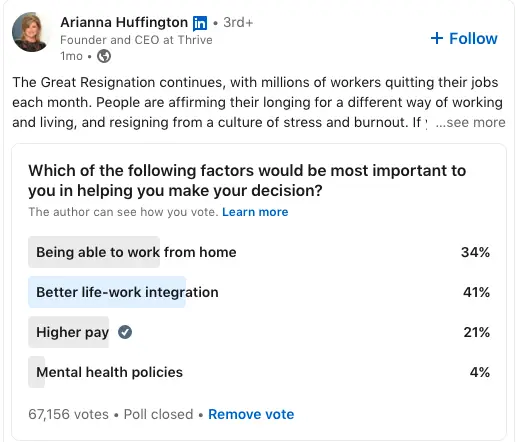
3. Analyze & follow your competitors
When people leave your company, they often join your competitors. And when it comes to retaining key staff, every employer is your competitor. It’s important to look at data and understand why people leave your firm and what makes them join other companies.
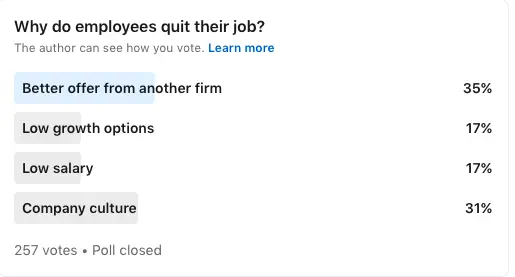
4. Provide a good work environment & culture
A good work environment is one where employees feel comfortable and motivated to do their best work.
There are a number of factors that contribute to a positive work environment, including the physical workspace, the work culture, and the relationships between employees.
Providing a comfortable and attractive workspace is a good first step in creating a positive work environment. The workspace should be designed to promote collaboration and creativity, and it should be free from distractions. The work culture should be one that values employee input and promotes open communication. Finally, fostering positive relationships between employees is essential for creating a supportive work environment. When all of these elements come together, employees will be more productive and engaged in their work.
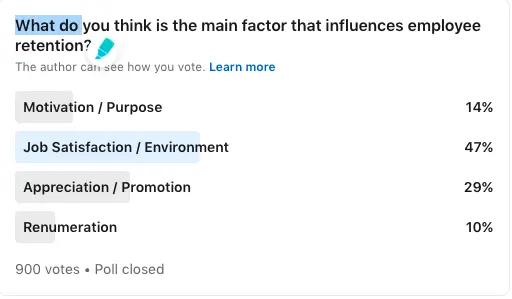
5. Provide professional growth
One way to keep your employees happy and engaged is to provide them with opportunities for professional growth. When employees feel like they are learning and growing in their careers, they are more likely to be satisfied with their jobs.
Additionally, offering professional development opportunities can show employees that you are invested in their success. This can foster a sense of loyalty and commitment to the company. There are many ways to provide professional growth opportunities, such as offering mentorship programs, sponsoring attending conferences, or providing tuition reimbursement.
By investing in your employees’ professional development, you can create a work environment where retention rates will increase.

6. Hire leaders vs managers
One key factor in employee retention is the relationship between employees and their managers. A recent study found that most employees quit their managers, not their companies. This indicates that businesses need to focus on hiring leaders who can inspire and motivate their teams.
Leaders who are able to create a positive work environment and help employees feel valued are more likely to retain their employees. In today’s competitive market, businesses that invest in leaders will be better positioned to succeed.
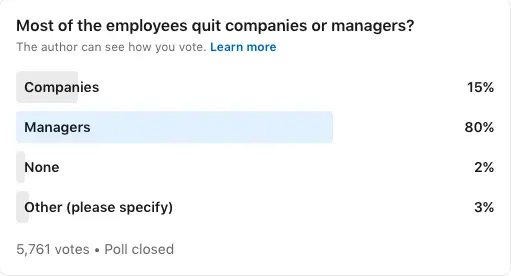
7. Don’t create a toxic environment
A toxic work environment is one of the main reasons why employees choose to leave a company. In a toxic environment, employees feel mistreated, undervalued, and unappreciated. This can lead to decreased productivity and engagement, as well as increased stress levels. Toxic workplace environments can also lead to conflict between employees, which can further damage morale. If a company wants to retain its employees, it is important to create a positive and supportive environment.
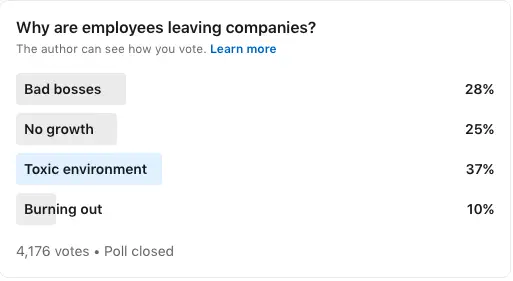
Employees should feel like they are valued members of the team and that their contributions are recognized. If a company can create this type of environment, its employees will be more likely to stay with the company for the long term.
People should feel happy to check in every day in your organization. Happiness is contagious. If at least 80% of your team is happy, then the remaining members will also feel equally happy and motivated.
8. Pay your employees competitive salaries
One of the best ways to keep your employees is to pay them well. When workers feel that they are being fairly compensated, they are more likely to be satisfied with their jobs and less likely to look for new opportunities.
In addition, offering competitive salaries can help you attract and retain the best talent. By making sure that your employees are well-paid, you can improve your chances of keeping them happy and productive.
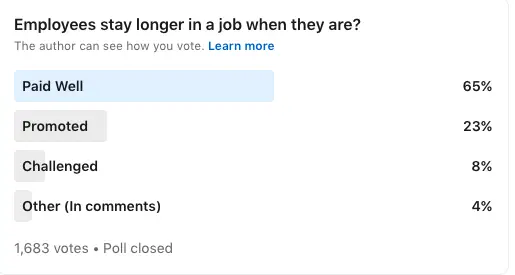
Also, try to keep fairness in the ranges of pay so that two people doing similar jobs don’t get paid drastically different salaries.
9. Foster connections in the workplace
Employee relations is the practice of fostering a positive relationship between an organization and its employees. Good employee relations are essential for retaining employees and promoting a positive work environment.
There are many ways to foster employee relations, but an effective method includes encouraging open communication.

If you can create a team such that they feel like an extended family, you will be considered a good leader. Good social support to team members can also help in creating loyalty. Employees will feel more connected with the company.
10. Value your employees
In a lot of countries, working in a company has a lot to do with respect. Respect is a priority for most people. Sometimes, it’s more important than compensation. There are times when people leave high-paying jobs because their bosses don’t value them.
When people feel like their work is appreciated and that they are making a difference, they are more likely to stick around.
There are many ways to show your employees that they are valued, from simple gestures like saying “thank you” to offering recognition and rewards for a job well done.
By taking the time to show your team that you appreciate them, you can create a work environment that is more supportive and ultimately more successful.

11. Flexible work culture
Flexibility has not become a big issue after the global pandemic. Many companies are now working through remote employees which gives employees the flexibility to work from their homes or other suitable locations. Work-life balance also plays a vital role.

12. Flexible work hours
As the workforce continues to evolve, more and more employees are seeking flexible work hours. In fact, a recent study found that nearly three-quarters of workers would like to have some degree of control over their work schedule.
There are a number of reasons why employees value flexible work hours, including the ability to better manage childcare responsibilities, the chance to pursue personal interests outside of work, and the opportunity to avoid rush hour traffic.
For businesses, offering flexible work hours is an effective way to retain employees.
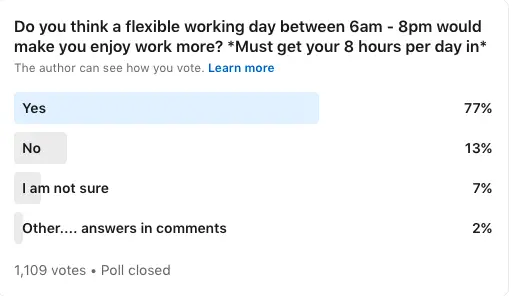
13. Provide the right training & development
When employees feel like they are learning and growing in their roles, they are more likely to be satisfied with their jobs and less likely to look for new opportunities elsewhere.
There are a number of ways to provide training and development opportunities, including offering internal workshops and classes, sending employees to external conferences and seminars, and providing mentorship programs.
By taking the time to invest in employee development, companies can create a more loyal and engaged workforce.
14. Get rid of unnecessary meetings
Meetings are the biggest workplace productivity killer. With WFH, meetings have increased 10-fold. One of the biggest productivity killers in the workplace is unnecessary meetings. These are meetings that could have easily been an email, or that don’t have a clear purpose.
All too often, employees find themselves sitting in endless meetings that could have been avoided. Not only are these meetings a waste of time, but they also sap employee morale and motivation.
If you want to improve productivity in your workplace, start by getting rid of unnecessary meetings. Let employees know that their time is valued and that you’re only going to call a meeting when it’s absolutely necessary. You’ll be surprised at how much more productive your team can be.
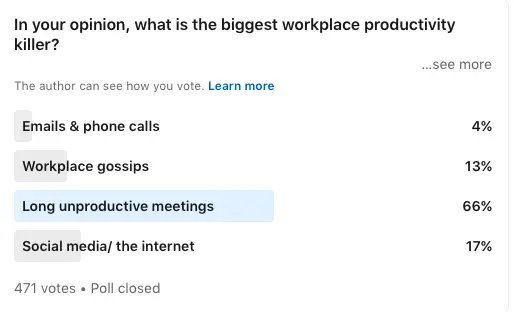
15. Look after the happiness of your employees
It’s no secret that happy employees are more productive and more likely to stay with a company for the long haul. But what’s the best way to make sure your employees are happy? Here are a few ideas:
First, offer competitive salaries and benefits. This will show your employees that you value their skills and experience.
Second, create a positive work environment. This means providing adequate resources and support and promoting a healthy work-life balance.
Third, give employees opportunities to grow and develop. This could mean offering training and development programs or allowing employees to take on new challenges.
By taking these steps, you can create an environment where your employees are happy and engaged.
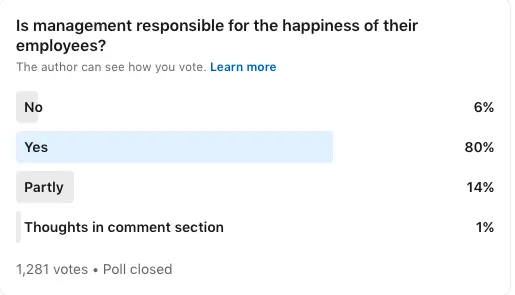
16. Communicate the “why” versus “what”
Most People believe in missions. They want to be a part of a bigger cause. Often companies have a grand mission and vision but are not fairly communicated to other people. The CEO should always strive to communicate the bigger picture to the entire team.
Managers should not blindly assign work to employees without telling them why it’s important and how completing the task helps the company achieve goals.
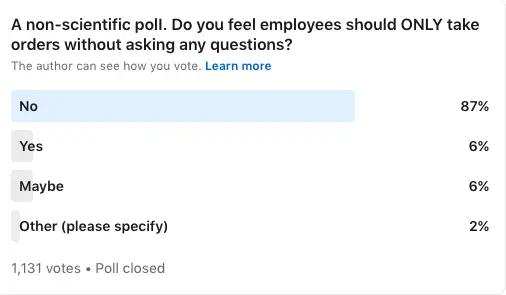
17. Implement a 4-day work week
As the job market continues to tighten, employers are facing an increasingly competitive landscape when it comes to recruiting and retaining top talent. One way to stand out from the competition is to implement a four-day workweek.
This arrangement can offer a number of benefits for both employees and employers alike. For employees, a four-day workweek can provide much-needed flexibility, especially for those with young children or other caregiving responsibilities. It can also lead to improved work-life balance, which can reduce stress levels and improve productivity.
For employers, a four-day workweek can help to reduce absenteeism and turnover, while also making the workplace more attractive to prospective employees.
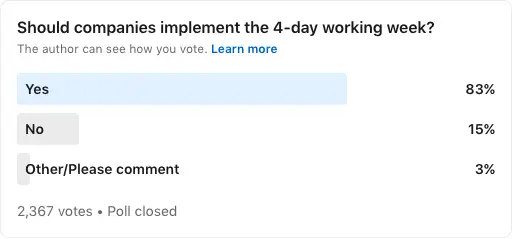
18. Review what people are writing about your workplace
It’s not enough to review what your customers say about your products. You need to keep an eye on what your past & current employees are talking about you online. People can be very vocal and are not afraid to give honest reviews about what it’s like to work at your company. Common places to give reviews are Google reviews and Glassdoor. Look out for negative reviews, work on the feedback and improve your workplace.

19. Give more ownership
When it comes to retention, studies have shown that employees are more likely to stay with a company when they feel a sense of ownership.
This can be accomplished in a number of ways, such as giving them the opportunity to lead projects, offering stock options, or simply providing more opportunities for input and decision-making.
Of course, giving employees more ownership also comes with its challenges, such as the potential for conflict and the need for greater accountability. However, when done correctly, giving employees more ownership can be a powerful retention tool.
20. Give recognition & rewards
Employee recognition is a key factor in retaining top talent. Numerous studies have shown that employees who feel recognized and valued are more likely to be engaged and committed to their work. Furthermore, they are less likely to look for new opportunities elsewhere.
There are many ways to show recognition, but some of the most effective include public acknowledgment, awards, and bonuses.
By taking the time to show appreciation for a job well done, employers can create a positive work environment that helps to retain employees. In today’s competitive marketplace, this is more important than ever.
Conclusion
By using some or all of the retention strategies we’ve outlined, you can create a company culture that employees want to stick around for. Happy employees lead to a more productive and successful business. What are you waiting for? Start implementing these strategies today!
FAQ – Retaining Talent in a Startup Business
- Why is retaining talent important for a startup business? Retaining talent is important for a startup business because employees are essential assets that contribute to the growth and success of the company. High employee turnover can lead to increased costs, decreased productivity, and a destabilized work environment. By retaining talented individuals, a startup can build a strong and stable workforce.
- Why is retaining employees more difficult for startups? Startups often face challenges in retaining employees due to factors such as limited financial resources, a chaotic and less structured work environment, high living costs in startup hubs, and the possibility of being acquired by larger companies. These factors can make it harder for startups to offer competitive salaries and benefits and create a stable work culture. Startups need to focus on creating a strong company culture and providing meaningful work to retain employees.
- What are some strategies to retain staff in a startup business?
- Recruiting the right candidates who are a good cultural fit.
- Providing a good work-life balance.
- Analyzing and following competitors to understand why employees leave and join other companies.
- Creating a positive work environment and culture.
- Offering opportunities for professional growth and development.
- Hiring leaders who can inspire and motivate teams.
- Avoiding a toxic work environment.
- Paying employees competitive salaries.
- Fostering connections and positive employee relations.
- Valuing and recognizing employees’ contributions.
- Implementing a flexible work culture and flexible work hours.
- Providing the right training and development opportunities.
- Minimizing unnecessary meetings.
- Focusing on employee happiness.
- Communicating the “why” behind tasks and goals.
- Considering a four-day workweek.
- Monitoring and addressing online reviews about the workplace.
- Giving employees more ownership and responsibility.
- How can a startup benefit from implementing these strategies? Implementing these strategies can lead to higher employee satisfaction, increased productivity, reduced turnover rates, and a more stable work environment. It helps create a positive company culture, attracts and retains top talent, and fosters a sense of loyalty and commitment among employees. Ultimately, these factors contribute to the long-term success and growth of a startup business.
- What can startups do to create a positive work environment? Startups can create a positive work environment by providing a comfortable and attractive workspace, promoting open communication, fostering positive relationships between employees, offering opportunities for growth and development, recognizing and valuing employees’ contributions, and ensuring a healthy work-life balance. By prioritizing these aspects, startups can cultivate a supportive and motivating workplace culture.
Also, read some of our related posts:
- Assembling the ideal startup team
- How to build a tech startup team?
- 15 benefits of having a diverse team in your startup organization
- Strategies To Resolve Conflicts In The Workplace
- Differences Between Founder And CEO – A Comprehensive Analysis
- How to let go of an employee gracefully?
- Roles & responsibilities of a CEO
- The role of a CTO and how to find one
- Why you need a Chief Marketing Officer & how to hire a great CMO?
- What are the role & responsibilities of a Chief Operating Officer (COO)?
- Why every business needs a Chief Productivity Officer?
- The role of a Chief of Staff and why does every new-age business need one?
- Why Every Startup Needs an Entrepreneur in Residence?
- 25 hiring hacks for startups




